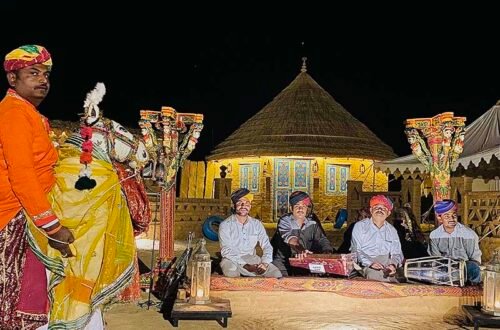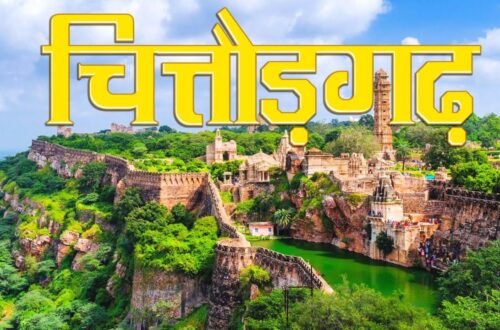The essence of Rajasthan’s culinary heritage is beautifully captured in the vibrant and aromatic spread of the Rajasthani Thali. This traditional Indian platter brings together a symphony of flavors, colors, and textures that reflect the region’s royal history, cultural richness, and love for food. Whether you’re exploring the royal kitchens of Jaipur or enjoying a Best Food & Culinary Tours in India, the Rajasthani Thali remains one of the most authentic representations of India’s culinary diversity.
The Cultural Significance Behind the Rajasthani Thali
The Rajasthani Thali is more than just a meal—it’s an experience woven into the social and cultural fabric of the state. Each component on the plate tells a story of adaptation and tradition. Rajasthan’s arid climate shaped a cuisine that focuses on ingredients with long shelf lives, such as lentils, gram flour, and dry spices. This led to the creation of iconic dishes like dal baati churma, gatte ki sabzi, and ker sangri—each offering a burst of distinct taste and texture. Served in a large metal platter, the Thali reflects the Rajasthani principle of “Atithi Devo Bhava” (the guest is equivalent to God). The presentation itself is royal—each bowl (katori) neatly arranged, symbolizing harmony, hospitality, and abundance.
A Symphony of Flavors in Every Bite
A traditional Rajasthani Thali is a perfect balance of sweet, sour, spicy, and tangy flavors. From the earthy richness of dal baati churma to the subtle sweetness of lapsi, every dish complements the other. The food here is not just about sustenance—it’s a celebration of spices. Cumin, coriander, asafoetida, mustard seeds, and dry red chilies dominate the flavor palette, while clarified butter (ghee) enhances the taste and texture of each dish. What makes it exceptional is the regional variation—no two Thalis are ever the same. In Jaipur, you might enjoy tangy ker sangri, while in Jodhpur, the highlight could be a robust laal maas curry.
The Influence of Geography and Lifestyle
Rajasthan’s desert landscape played a major role in shaping its cuisine. Scarcity of fresh produce led to innovative cooking techniques that prioritize preservation and flavor concentration. Many dishes are cooked with minimal water and maximum spices, resulting in bold, intense flavors that stand out from other Indian cuisines. The Thali is also deeply influenced by the warrior lifestyle of Rajputs—high-energy dishes rich in protein and fats were favored to sustain them through long days. Ingredients like millet, gram flour, and lentils became staples, forming the backbone of this hearty meal.
Exploring Rajasthan Through Food Tours
One of the most immersive ways to experience Rajasthani cuisine is through local food tours that highlight the region’s authentic dishes and street food culture. For travelers seeking a truly local experience, the Jodhpur food walk tour offers a delightful exploration of the city’s bustling markets and hidden eateries. From mirchi vadas to makhaniya lassi, each stop introduces a new flavor and culinary story that complements the grandeur of the Rajasthani Thali. Similarly, the Udaipur food walk tour provides insight into Mewar’s distinctive vegetarian traditions, featuring dishes like daal baati and ghevar that capture the essence of local life.
The Royal Touch – Heritage and Hospitality
What makes the Rajasthani Thali particularly unique is the royal touch that continues to influence the state’s culinary presentation. Many recipes trace their roots to the kitchens of Rajput palaces, where food was considered a form of art. Dishes were carefully curated not just for flavor but also for color, aroma, and visual appeal. Even today, in both traditional homes and luxury restaurants, meals are served with a deep sense of respect and ceremony. The Thali represents this royal generosity—an endless offering of delicacies meant to leave the guest content and fulfilled.
The Art of Preparation and Presentation
Preparing an authentic Rajasthani Thali requires both skill and patience. Every element, from kneading the baati dough to slow-cooking the dal, is performed with precision. The ghee-roasted churma provides the perfect sweet ending, balancing the spice and savor of the preceding dishes. In many households, food is prepared over charcoal stoves to retain its smoky essence, and traditional brass utensils are used to enhance both the taste and authenticity. The attention to detail and dedication to technique underscore the expertise passed down through generations.
Health, Nutrition, and Balance
Despite its richness, the Rajasthani Thali is well-balanced in nutrients. The combination of lentils, grains, dairy, and vegetables ensures a wholesome meal that satisfies both the palate and the body. The use of spices like turmeric and cumin adds not only flavor but also health benefits—anti-inflammatory, digestive, and detoxifying properties that make the Thali both indulgent and nourishing. Even ghee, when used mindfully, provides essential fats that aid in digestion and energy.
Why the Rajasthani Thali is a Culinary Experience Worth Having
The Rajasthani Thali stands as a symbol of cultural unity, culinary excellence, and heartfelt hospitality. It encapsulates the diversity of India’s regional cuisines while maintaining its distinct identity. Every bite carries a story—from the history of royal kitchens to the resourcefulness of desert life. Whether enjoyed in a traditional home, a local eatery, or during a food tour, the experience remains unforgettable. For food lovers, it’s not merely a meal—it’s a sensory journey through Rajasthan’s glorious past and flavorful present.
Final Thoughts
In an age of fast food and instant dining, the Rajasthani Thali remains a testament to the beauty of slow-cooked, handcrafted meals that honor culture and tradition. Its meticulous preparation, deep-rooted history, and unmatched variety make it a must-try for anyone eager to explore India’s culinary depth. As you savor its layered flavors, you don’t just taste food—you experience a legacy passed down through centuries of Rajasthani hospitality.





